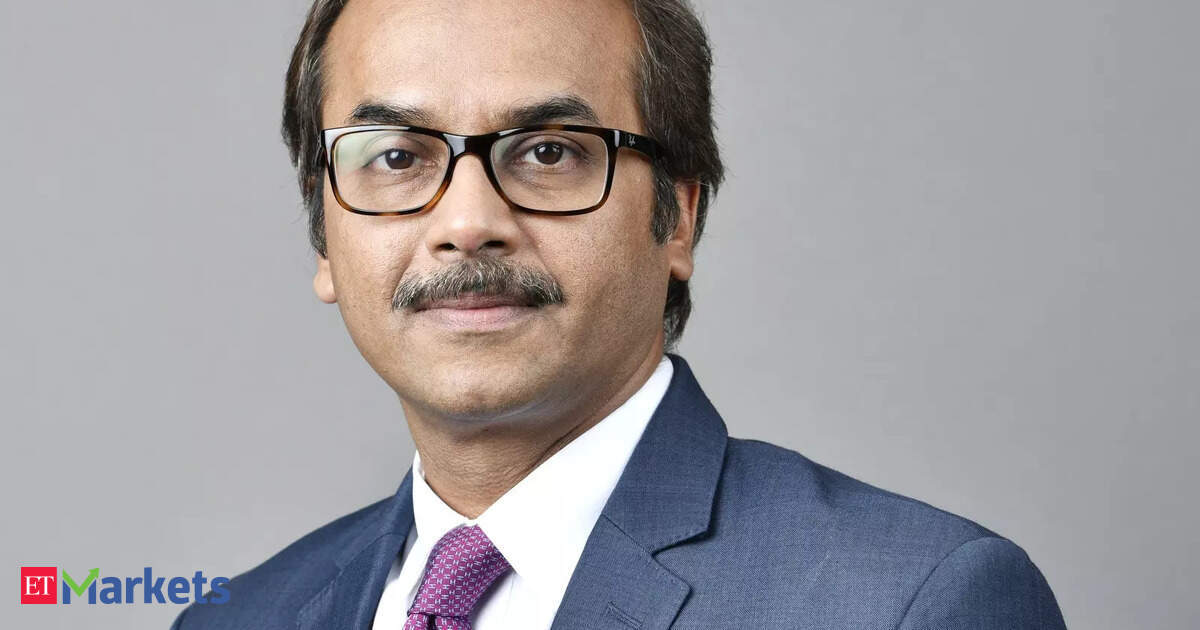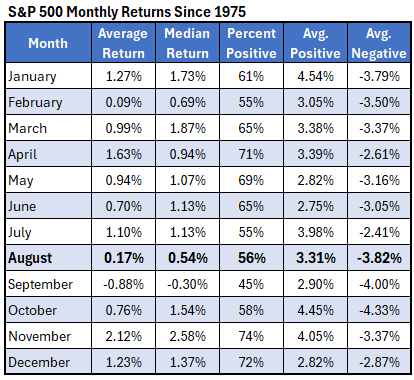In this edition of The Golden Thumb Rule, Ajit Menon, CEO of PGIM India Mutual Fund, sheds light on why medical costs are the silent killers of retirement dreams.
Drawing from research and real-life investor behavior, he explains why relying solely on employer-provided health insurance isn’t enough—and why proactive planning, including adequate health cover and disciplined investing, is essential for achieving true financial freedom. Edited Excerpts –
Kshitij Anand: Most people in their 30s or even 40s tend to push retirement planning to the backburner, saying such things are too far away to worry about at this point. Why do you believe that mindset is risky, and why is it critical to start early?
Ajit Menon: I would first say that this mindset—of delaying things that are far in the future—is a human condition. This isn’t just applicable to us in India; it applies to people all over the world. Retirement, therefore, is a subject of interest and importance globally, not just in India.
What makes it even more important in India is that we don’t have the kind of social security systems that many developed countries provide for their people. That makes it even more essential for individuals to take responsibility for their own retirement planning.
Just for a moment—and I don’t want to get too technical—but from a biological perspective, the risks we react to as humans are typically those we can see, touch, feel, or hear. Because things like long-term retirement and climate change aren’t immediately tangible, they become extremely difficult for humans to plan for, and that requires support.
Personally, even though I’ve been in the industry for decades, I have a financial advisor for planning my finances and those of my family. That’s one piece of standard advice I would give to others as well.
Now, more importantly, let’s look at some simple facts about why it’s so important to start early—primarily due to the cost of delay. Take, for instance, a 30-year-old who wants to retire at 60 with a corpus of ₹2 crore. Compare that to someone aged 40 or 50 with the same retirement goal. For the 30-year-old, the required monthly investment is around ₹5,500. For the 40-year-old, it rises to over ₹20,000. And for the 50-year-old, it jumps to more than ₹85,000 per month. That’s the cost of delay.
So, the earlier one starts, the more manageable it becomes—and it allows you to live your life while consistently prioritising retirement. The cost of delay and our natural tendency to not think far ahead are both issues young people need to recognise.
Kshitij Anand: Absolutely. You’ve said it well—the golden thumb rule here is that the cost of delaying retirement planning is something everyone should take note of. We often hear about retiring rich, which has now become a buzzword on social media, even Instagram reels. But these are serious questions. So, while retiring rich or retiring early sounds attractive, what does a comfortable retirement really mean in practical terms?
Ajit Menon: Since we’re from the financial world, we tend to think about everything in financial terms. But when I talk to investors, I often remind them that our lives are deeply interconnected. So, if you’re thinking about a comfortable retirement, the first principle should actually be your health—even more than your wealth.
Health issues can significantly derail your plans and corpus. And we’ve all seen this—our family members in their 60s, 70s, and 80s often struggle with serious health conditions, not just aches and pains. Medical expenses can be high, and chronic conditions are common. So, yes, the first principle is health.
The second, closely linked principle, is purpose. For some reason—maybe because we’re anchored in the experiences of our elders—retirement is often seen as a phase where you just stop working and live off your savings, watching Netflix or scrolling through social media. But that’s not practical.
What’s more important, though not easy, is to visualise and plan: What will I do in my retirement years? Whether you retire at 40 or 60, keeping yourself purposeful has a big impact. Purpose strengthens your mental health, which in turn positively affects your physical health.
Ultimately, the goal is to be better than the average retiree. If you can solve for these two—health and purpose—you’ve cracked the code. So, for me, a happy, comfortable retirement equals well-being. I wouldn’t want to sound moralistic and say, “Live within your means.” Aspirations are high today—for both the younger and older generations.
Personally, when I speak to my children, I tell them that anyone who wants to be happy can be happy. The problem arises when you want to be happier—because that immediately leads to comparison. Happier than whom? Someone’s holiday? Their second car? That’s just human nature.
So yes, overall well-being—of mind, body, spirit, and purpose—is key to a truly comfortable retirement.
Kshitij Anand: Absolutely. Another golden rule is that health is wealth, and mental health should be a top priority. If someone is planning for retirement, they should also understand what they intend to do once they retire. That sense of purpose is crucial, because doing nothing can often lead to many problems. We’ve seen this happen to people…
Ajit Menon: And there’s a lot of psychology involved in this. I would say that at PGIM, we are the only asset manager that conducts research with NIQ Nielsen on retirement readiness. We’ve found that people who have a plan and a purpose—who pursue their passions after retirement—are much more prepared for it. Professionals, for example, don’t struggle as much as people in more conventional jobs.
We’ve also observed that people typically plan only for “happy goals”—a child’s education, a child’s marriage, buying a house or a car, starting a business, going abroad. But retirement, especially for those in service, is often not viewed as a “happy” goal. So, the first principle is to make it happy.
What we suggest is to change the language—because words have power. Instead of thinking of it as “retirement,” think of it as “financial freedom.” Just reframing it that way can bring more joy. Whether you’re 30 or 60, if you tell yourself, “I want financial freedom, and here’s what I intend to do,” it becomes more meaningful.
Kshitij Anand: Absolutely. In fact, looking forward to retirement should bring happiness. You should be able to say, “Okay, when I turn 60, I’ll be doing this,” and that thought should bring a smile to your face. That mindset makes you more eager to step into that phase of life. Yes, there’s a lot of psychology involved, and it helps you maintain your health—and when your health is maintained, your wealth is preserved too.
But let me also quickly come to the elephant in the room—inflation—especially medical inflation, which is a silent killer. How do you suggest investors plan for this when thinking about retirement?
Ajit Menon: You’re absolutely right. Inflation in general—and medical inflation in particular—can be very challenging. For many families, rising education costs are another big concern. These two—medical and education inflation—are difficult to manage over time.
A lot of working professionals receive medical insurance from their employers and assume that’s sufficient. But if you’re genuinely thinking about financial freedom, it’s important to ensure that you have adequate health insurance—one that has the features and flexibility you’ll need over the long term.
Many in the older generation may not have had access to the kind of products that are available today—products with no-claim bonuses and other useful features. So it’s important to evaluate these options carefully. As I always say, having a good advisor to guide you on what’s appropriate for you is critical—and the earlier you do this, the better.
Of course, nothing replaces your own efforts to stay healthy. That said, I’m actually very hopeful—not necessarily about our generation or the ones before—but about the younger generation. Their awareness of health and fitness is far higher today than what we experienced growing up.
Kshitij Anand: And let me also get your perspective. There’s a lot of talk about this 4% rule—withdraw 4% a year in retirement. Does that still work in the Indian context today?
Ajit Menon: A little history here—this idea of the 4% rule originated from research by a gentleman named William Bengen in the U.S. He proposed the 4% inflation-adjusted withdrawal rate for retirement years. Now, while a lot of work has been done on this in developed markets, not much has been done in India. However, I do know that people like Ravi Saraogi and Rajan Raju have worked on this, and their findings were also covered in the media. I’m quoting their work here because they are among the few who have tried to adapt this rule to the Indian context.
One of the advantages that developed markets have is access to long-term data. Bengen, for instance, had over 100 years of data to perform rolling 30-year retirement analyses and determine feasible withdrawal rates based on various market conditions. In contrast, our stock markets are relatively young, with around 45 to 48 years of history. That makes it much harder to analyze long-term retirement scenarios in India. So, that’s one challenge.
Also, considering that retirement today may last 25–30 years—and with increasing longevity, there’s research suggesting that people born today may live well beyond 100—this becomes even more important.
In the research by Ravi Saraogi (at Samasthiti) and Rajan Raju, they used the available data, ran Monte Carlo simulations, and did extensive analysis to test the 4% rule in the Indian context. What they found is that while the 4% rule may work sometimes, a safer withdrawal rate in India is somewhere between 3% and 3.5%.
Now, there’s a bit of jargon here when we talk about withdrawal rules. But as a basic thumb rule, one should understand that the difference between the return on your portfolio and the inflation of your household—that is, the real return—is what really matters.
So, if you’re earning 10% annually and your household inflation is 6%, your real return is 4%. Ideally, your withdrawal rate should be aligned with that real return to avoid dipping into your capital. That way, you preserve your corpus.
Yes, it’s a bit complicated because you need to reassess it each year—ask yourself, “Has something changed?” Hopefully, by the time people reach their later years, children are educated and independent, and if you’ve managed your health well, your financial dependencies may reduce.
For simplicity, many prefer a fixed number, and in that case, a conservative withdrawal rate of 3% to 3.5% is advisable. Ultimately, a good financial advisor can help tailor this to your household needs.
Kshitij Anand: Also, we talk a lot about equity. Is equity still the best vehicle for building a retirement corpus, especially for young investors? Or should there be a mix with debt or other asset classes?
Ajit Menon: Given the historical returns of equity, it’s very tempting to think of it as the be-all and end-all solution for retirement planning. But as the saying goes, something may be sufficient but not necessary to solve all problems. So, the short answer is: No, you cannot have a 100% equity portfolio going into retirement.
However, during the accumulation phase—as you asked, particularly for young people—equity can be a very effective tool. If you have a long investment horizon, a well-diversified equity fund can serve you well. But I’d add a note of caution—one rooted in common sense: never buy something when it’s expensive.
Whether you’re shopping at a mall, buying real estate, or investing in gold, everyone loves a good deal. Yet somehow, our interest in equity spikes when the markets are booming—and that’s when it’s expensive.
So, if someone were to say, “Cut the jargon, give me a simple product I can invest in as a young person,” my personal bias is towards the Balanced Advantage Fund category in mutual funds. These funds have built-in asset allocation strategies—they reduce equity exposure when markets are expensive and increase it when markets are more reasonably priced.
For conservative or even moderate investors, these funds can serve as a “fill-it, shut-it, forget-it” solution. They help counteract behavioral biases and market timing mistakes.
Even in retirement, a 100% equity allocation is risky. For some, it might be a necessity due to inadequate savings, but I would urge caution. If you retire with a corpus that is fully in equity and the market dips during your first few years of retirement, you risk drawing down your capital too quickly—and you may not get a chance to recover.
Some excellent work—again by Ravi Saraogi, Rajan Raju, and others—has shown that equity is not always the best answer on its own. That said, having some equity is absolutely critical, as long as you’re disciplined enough not to touch it during short-term market volatility and give it time to deliver returns.
Kshitij Anand: So, if we go by human psychology, we always like things that are expensive—whether it’s cars, perfumes, or anything else costly, that really attracts us.
Ajit Menon: Right.
Kshitij Anand: So, equity is no exception, I would say.
Ajit Menon: Exactly. And again, I think there is a generation that doesn’t get it, but I’m very hopeful about the younger generation. We worry about them, but they get it. They know how to do their research to get a discount on what they like. Of course, there will always be two sets of people. Sometimes, having money, affluence, or privilege can shape that behavior.
But we are talking about a very large audience—especially in India—where people struggle with their basic income and are not thinking of financial goals, but just building a corpus. And therefore, the golden thumb rule is: don’t buy anything that is expensive. You can get good-quality stuff at a discount. You know you’re already doing that in other aspects of your life—apply the same logic to equity as well.
And I would say a balanced advantage fund does it automatically for you, so that you don’t have to worry about it. So, there’s the balanced advantage fund coming in again.
(Disclaimer: Recommendations, suggestions, views, and opinions given by experts are their own. These do not represent the views of the Economic Times)








